Coming into summer we are placing ourselves at greater risk of skin damage and skin cancer the longer we spend in the sun. But there are sun protection foods we can eat that protect the skin. This post tells which foods they are.
A new type of sunblock
If you thought sunscreen or clothing and a hat was the only way to protect your skin from the damaging rays of the sun – think again. Particular foods and our overall diet affects skin cancer risk also. There are particular foods that actually protect your skin from the sun’s radiation. I’ll tell you about 2 studies that show this clearly, and what are the best sun protection foods.
The Problems
We need Vitamin D. We get Vitamin D naturally by exposing our skin to sunshine. Normal Vitamin D levels improve survival in all chronic conditions. Vitamin D makes bones strong. Good immunity is also dependant on Vitamin D. You can read more about why we need Vitamin D for long life <here>.
A thinning ozone layer, however, allows too much exposure to harmful radiation from the sun. This increases the risk of cellular damage that can lead to skin cancer.
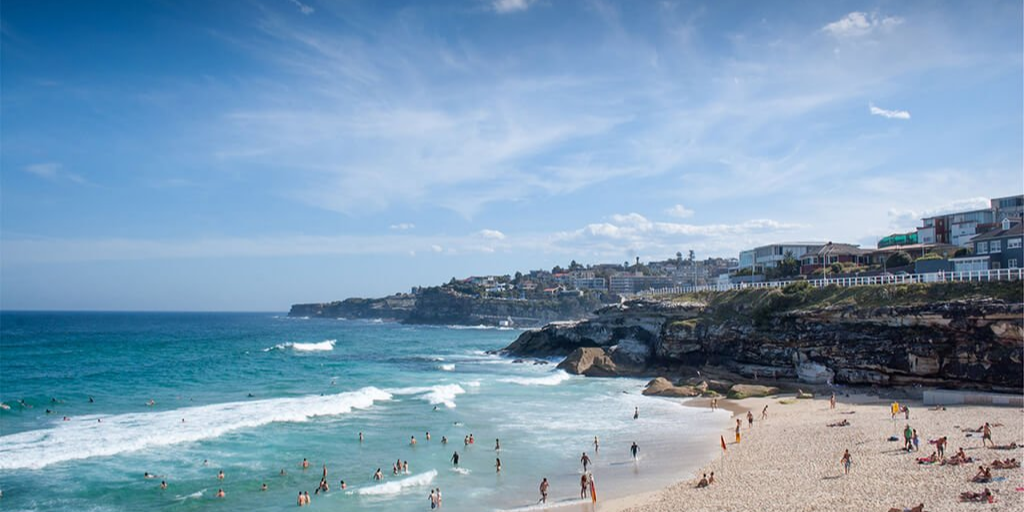
Depending only on Vitamin D supplementation for this hormone/nutrient increases our risk of depression; it is the actual sunLIGHT on eyes and skin that impacts mood disorders.
How radiation damages
Radiation from the sun is a different type of radiation from X-rays, cancer-radiation treatment and nuclear radiation. They are ionising and we know exactly how these damage cell DNA.
Non-ionising radiation from the sun is a well-documented human carcinogen that causes DNA mutations by increasing ‘free radicals‘. These are unstable electrons that damage surrounding tissue.
- UVB rays cause squamous cell carcinoma and actinic keratosis with lifetime exposure
- increased UV radiation from intermittent sun exposure and sunburning can cause melanoma and basal cell carcinoma.
Sun protection foods put to the test
In 2007 an Australian skin cancer study looked at the dietary patterns of 1360 people over ten years. Researchers compared a meat-fat dietary pattern and a vegetable-fruit pattern. The higher the vegetable-fruit pattern, the less skin cancer. A high meat-fat pattern increased skin cancer occurrence by 54%.
We can see that sun protection foods come from the plant kingdom.

In September this year, 2019, a team of USA and Costa Rican researchers looked at several studies on the effect of antioxidants on skin damage. They found some remarkable results with the plant nutrients, lutein and zeaxanthin, plant chemicals found in green leafy vegetables.
(You can read the actual study summary <here> and follow the links to read the entire study if you wish – there is much more in it than I have described about how this nutrient affects health in powerful ways.)
After radiating mice with UVB light, they gave supplements of these nutrients. This reduced the number of sunburnt cells and the excessive growth (hyper-proliferation) of skin cells. This is a characteristic of cancer cells, so reducing this pattern is good.
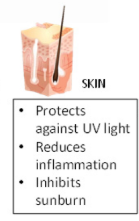
In another study they reviewed, a group of females with premature skin ageing took either supplements of the above antioxidants or a placebo (sugar pill). The supplementation group showed improvement in several skin markers – including photo-protective activity in only 12 weeks. Consuming these antioxidants protected against UV light, reduced inflammation and inhibited sunburn.
We know then that sun protection foods are those high in antioxidants.
How antioxidants work
UV radiation affects atoms by separating electrons from the atom nucleus. Many chemical reactions in the body (including breathing normal air) cause this, but radiation from the sun especially so. When electrons separate from the nucleus of an atom, they bounce around looking for a new ‘family’. Electrons need a set number of them linked together in order for them to become ‘stable’ again.
The name of this ‘bouncing about’ is “oxidation”. It causes damage to DNA strands – mutations – which instigate the cancer process if not repaired quickly.
The body’s first method of repair is for particular other atoms to come and stop the oxidation process of those electrons. These types of atoms have a spare electron for this purpose. They ‘donate’ it to the bouncing electrons, which then stop their damaging oxidation process, settle down and become ‘stable’. The DNA can then be repaired. No more cancer process!

Antioxidants in large amounts are only found in plant foods. This is the primary reason why we need to eat a LOT of them. These foods are the ones we should focus on it we are going to be exposing ourselves to excessive sunshine, before a beach holiday or a cruise, for instance
A diet low in antioxidants, such as a low carbohydrate/ketogenic style diet, places you at much higher risk of cancer – 35% increased risk. It is easy to understand how such diets raise cancer risk so much when you see how plant foods (which are all carbohydrate) are limited severely.
Low antioxidants = more cancer.
You can read more about this in this post.
4 ways to protect your skin from sun damage
- 5 – 10 minutes skin exposure of arms and legs, or hands, face and arms, 2 – 3x/week around midday in summer for fair-skinned people (longer for darker-skinned individuals or in winter or at other times of day)
- After this, use a non-chemical, non-nanotechnology sunscreen, hat and clothing to cover exposed skin.
- If you decide to tan from the sun, build up the protective melanin in your skin gradually. This is important to decrease the chance of melanoma. However, even gradual tanning increases wrinkling and ageing of the skin as well as squamous cell carcinoma.
- Eat a diet rich in sun protection foods, particularly vegetables, both raw and cooked. Kale and spinach are at the top of the list. However all green cruciferous vegetables and leafy greens are good.
A note about sunscreens
Chemical sunscreens reduce risk of squamous cell carcinomas and actinic keratosis (linked to UVB). They do not adequately block UVA which causes melanoma.

Zinc and titanium dioxide sunscreens protect against both UVB and UVA light, however, they leave a white residue on the skin.
If there is no residue, they are either chemical or nano-technology. This means their components are small enough to enter the bloodstream, and we have no proof that this is not harmful.
There are four main lifestyles changes necessary to lower your risk of all cancers. Fill in the pop up form on this page and I’ll send you my free checklist.
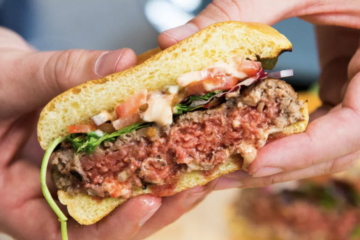
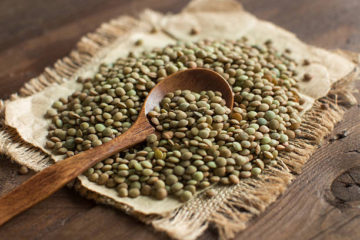
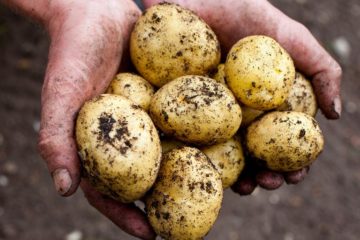
0 Comments